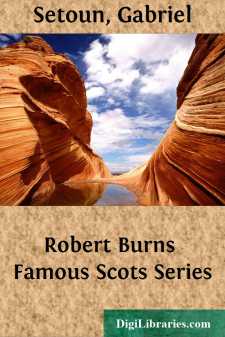Categories
- Antiques & Collectibles 13
- Architecture 36
- Art 48
- Bibles 22
- Biography & Autobiography 813
- Body, Mind & Spirit 142
- Business & Economics 28
- Children's Books 13
- Children's Fiction 10
- Computers 4
- Cooking 94
- Crafts & Hobbies 4
- Drama 346
- Education 46
- Family & Relationships 57
- Fiction 11828
- Games 19
- Gardening 17
- Health & Fitness 34
- History 1377
- House & Home 1
- Humor 147
- Juvenile Fiction 1873
- Juvenile Nonfiction 202
- Language Arts & Disciplines 88
- Law 16
- Literary Collections 686
- Literary Criticism 179
- Mathematics 13
- Medical 41
- Music 40
- Nature 179
- Non-Classifiable 1768
- Performing Arts 7
- Periodicals 1453
- Philosophy 64
- Photography 2
- Poetry 896
- Political Science 203
- Psychology 42
- Reference 154
- Religion 513
- Science 126
- Self-Help 84
- Social Science 81
- Sports & Recreation 34
- Study Aids 3
- Technology & Engineering 59
- Transportation 23
- Travel 463
- True Crime 29
Sort by:
by:
Paul Allardyce
INTRODUCTION The Use of Punctuation.—Punctuation is a device for marking out the arrangement of a writer's ideas. Reading is thereby made easier than it otherwise would be. A writer's ideas are expressed by a number of words arranged in groups, the words in one group being more closely connected with one another than they are with those in the next group. An example will show this grouping...
more...
CHAPTER I. The Dismissal of Silver Phil. "His name, complete, is 'Silver City Philip.' In them social observances of the Southwest wherein haste is a feacher an' brev'ty the bull's eye aimed at, said cognomen gets shortened to 'Silver Phil.'" The Old Cattleman looked thoughtfully into his glass, as if by that method he collected the scattered elements of a...
more...
by:
Bram Stoker
Chapter I It all seemed so real that I could hardly imagine that it had ever occurred before; and yet each episode came, not as a fresh step in the logic of things, but as something expected. It is in such a wise that memory plays its pranks for good or ill; for pleasure or pain; for weal or woe. It is thus that life is bittersweet, and that which has been done becomes eternal. Again, the light skiff,...
more...
by:
Various
Wednesday, December 8, 1886. On the joint resolution (S.R. 5) proposing an amendment to the Constitution of the United States extending the right of suffrage to women. Mr. BLAIR said: Mr. PRESIDENT: I ask the Senate to proceed to the consideration of Order of Business 122, being the joint resolution (S.R. 5) proposing an amendment to the Constitution of the United States extending the right of suffrage...
more...
JUST LIKE A CAT They were doing good work out back of the Westcote express office. The Westcote Land and Improvement Company was ripping the whole top off Seiler's Hill and dumping it into the swampy meadow, and Mike Flannery liked to sit at the back door of the express office, when there was nothing to do, and watch the endless string of waggons dump the soft clay and sand there. Already the...
more...
by:
Roland Pertwee
CHAPTER 1. DISSOLUTION. At a pawnshop in the Gray's Inn Road, Richard Frencham Altar disposed of the last of his worldly goods. Four suits from a tailor in Saville Row, two pairs of shoes in brown and patent by a craftsman of Jermyn Street, some odds and ends of hosiery, a set of dressing table brushes with black monograms on ivory and the gold cigarette case Doreen had given him on the day of...
more...
These volumes make a separate work in themselves. They form also the natural sequel to the other histories already published by the Author, as well as the necessary introduction to that concluding portion of his labours which he has always desired to lay before the public; a History of the Thirty Years' War. For the two great wars which successively established the independence of Holland and the...
more...
by:
Mark Twain
Chapter VIII. The question of the Seal. About five o'clock Henry VIII. awoke out of an unrefreshing nap, and muttered to himself, "Troublous dreams, troublous dreams! Mine end is now at hand: so say these warnings, and my failing pulses do confirm it." Presently a wicked light flamed up in his eye, and he muttered, "Yet will not I die till HE go before." His attendants perceiving...
more...
PREFACE This study was begun as one of the several researches of the Bureau of Social Research of the New York School of Philanthropy, largely at the suggestion of Dr. Samuel McCune Lindsay, the director, to whose interest, advice and sympathy its completion is largely due. Sincere thanks are due the Bureau for making the investigation possible. The material was gathered between January, 1909, and...
more...
by:
Gabriel Setoun
BIRTH AND EDUCATION Of the many biographies of Robert Burns that have been written, most of them laboriously and carefully, perhaps not one gives so luminous and vivid a portrait, so lifelike and vigorous an impression of the personality of the poet and the man, as the picture the author has given of himself in his own writings. Burns's poems from first to last are, almost without exception, the...
more...











